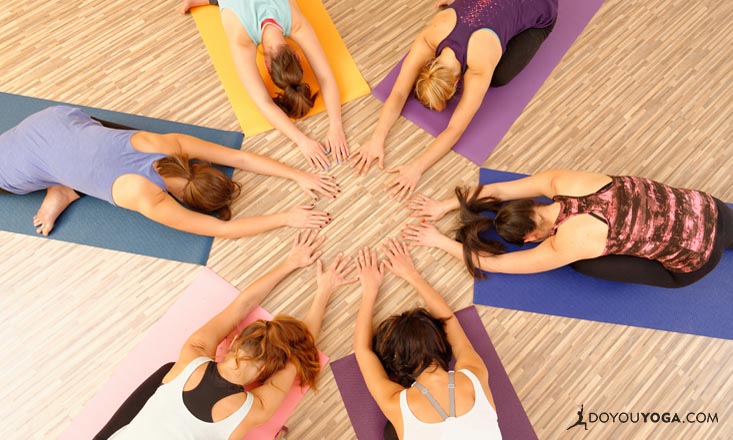The power of touch is lodged in our brains and bodies early. When we are held and coddled as infants, we coo and make happy sounds. The power of touch does not go away as we age; rather, touch proves we are part of a family, a group, or a people.
Given the well-publicized stories of yogis physically harassing their students, the question of touch during class is on everyone’s mind. While touch can arise from good intentions and be used as a positive force in teaching, any teacher might also use touch as manipulation arising from selfish intent.
The Power of Touch
In 1990, for the practical portion in my doctoral degree, I studied the power of touch as a healing tool within a Christian liturgical context. Touch and prayer in a healing service has great power due to its intent, the importance of physical contact, and the safe container in which touch occurs.
I learned that healthy touch is something humans need. Our skin is the largest sensory receptor on our body, so when someone touches us and the touch is not violent, sexual, scary, or threatening, most normally-adjusted people will experience it as a positive connection with another.
Harry Harlow’s experiments at the University of Wisconsin with rhesus macaques demonstrated the vital importance of touch. The monkeys were fed and watered, but were deprived of touch and social contact.
They quickly withered, and in the case of one monkey that had been isolated for three months in a wire cage with no physical contact to other rhesus, the autopsy report listed its cause of death as emotional anorexia.
A Touchy Subject
For people who have experienced inappropriate touch, a yoga teacher’s hands-on approach may be unwelcome, offensive, or even repulsive. This is why the subject of touch is touchy; it’s hard for us to predict how anyone else will react to a touch.
In my experience attending yoga class over a period of two and a half years, out of 12 teachers (nine women, three men), four offered a guiding touch without asking, seven have never touched anyone, and one instructor offered a guiding touch, but was cautious beforehand and asked me if her touch was okay.
From my perspective, why would yoga teachers be afraid of touch? I believe it’s potentially the strongest teaching tool both for correcting alignment and making personal contact. If a teacher is afraid to guide with touch when they know it would help, it says more about the teacher than the student.
In my opinion, there are four reasons teachers should use touch in yoga class.
1. Most studio classes are public.
If classes are held in a public space, other students are present, which means there are witnesses for each interaction.
2. In the context of yoga, the main focus of touch is on bodily alignment and improvement.
In a public and safe container, I think there’s an implicit understanding that the teacher is there to help students with the best of his or her knowledge, and that may include their use of a guiding touch.
Unless I am entirely creeped out by the feeling I get from a teacher, I have nothing to go on that would make me say, “Stay away!”
3. Feedback is immediate.
If the student doesn’t like being touched, the teacher will know either by the student’s immediate reaction, or the student will speak up, or they will not come back again—ever. If this happens, it says much more about the student than the teacher.
In that case, it’s best just to let it go, or to take note of asking for the student’s permission prior to all hands-on adjustments, so as not to scare them away from your yoga class.
4. Touch is the most powerful human interaction.
Touch can be used for making connection, healing, or consolation. More importantly though, touch can be employed by the teacher to help a student steer free of injury and improve their form and depth.
The Right to Speak Up
The yoga instructor is a better instructor when making use of touch for teaching purposes. If we as students begin feeling that our teachers are touching us for reasons other than helping us improve, though, then we must speak up—and speak most forcefully. We all have a voice and a right to use it.
There’s no problem with speaking up if something inappropriate is happening; this is true not only with a yoga teacher, but with anyone in a position of mentoring, leading, teaching, or coaching.
Touch With Care and Integrity
If our teachers are people of integrity, and all 12 I’ve encountered are, they need not fear using touch to help improve a student’s practice. You and I as students are well served by a gift of touch from our teachers when it is aimed at our improvement, and comes from their place of caring and integrity.
A touch amplifies generative instruction and connects us to an ancient wisdom that we’ve known since infancy, a wisdom that heals body and mind.

Want to contribute as a member of the DOYOU community too? Submit your article right here!


